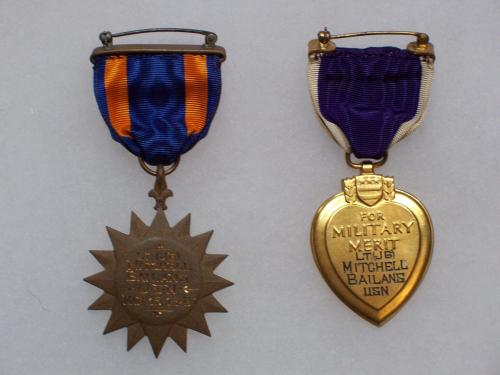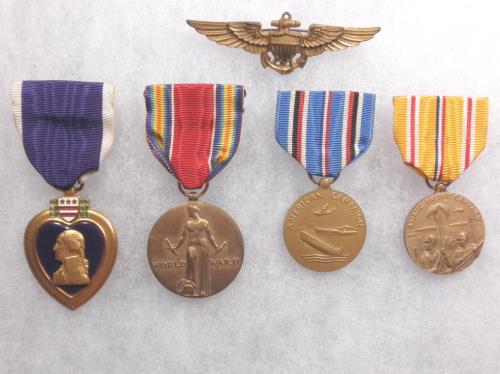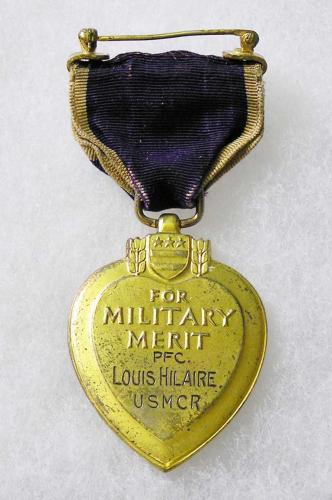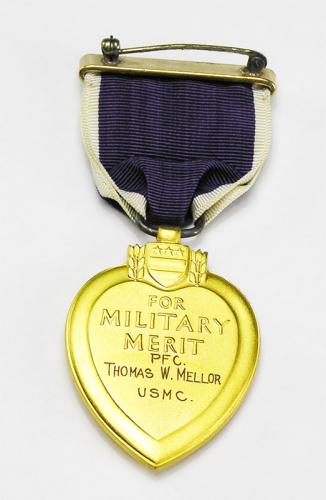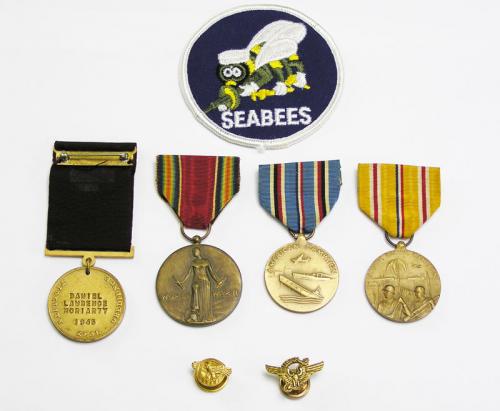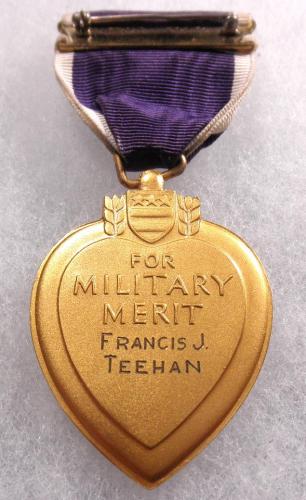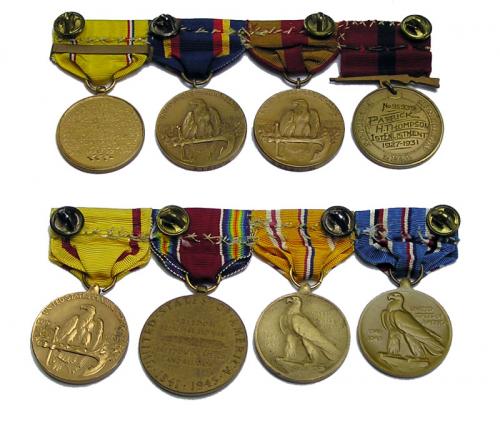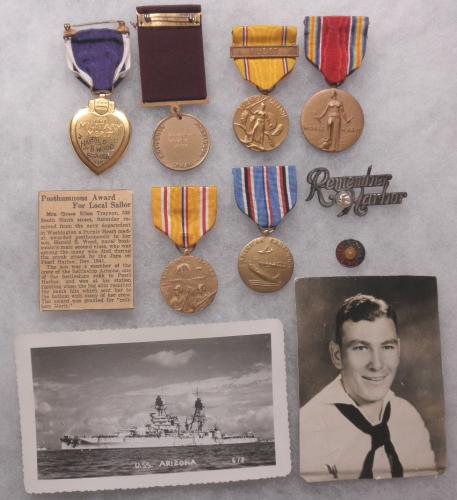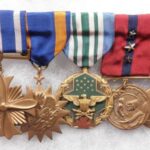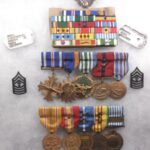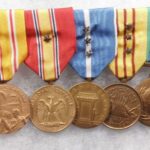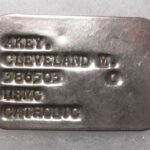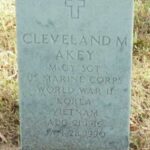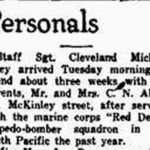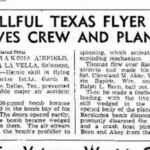Cleveland Michael Akey was born in Wisconsin Rapids, Wisconsin August 21, 1916. In a Wisconsin Rapids newspaper article dated June 7, 1944, his parents are listed as Mr. and Mrs. C.N. Akey of 911 Mckinley Street, Wisconsin Rapids. The article makes note that Akey was with the "Red Devil" torpedo-bomber squadron for the preceding year. No service record for Akey has been located, so his enlistment date is unknown. It is known that he was a crewman on a TBF Avenger in VMTB 232 in WW2. A San Antonio newspaper account of one of his exploits from January 8, 1944 shows that he was part of a crew piloted by 1st Lt. Garth B. Thomas, and his fellow crewman was PFC Ralph Born. This event described occured at Barakoma Airfield on Vella Lavella Island in the Solomons. That field was also the home of Pappy Boynton's Black Sheep.
MGYSGT Akey's group includes his two USMC bar mounted medal groups. On the first bar, is his WW2 Navy Distinguished Flying Cross, WW2 Navy Air Medal, Vietnam Joint Service Commendation medal, USMC Good Conduct medal with 2 bronze and 1 silver star, and WW2 American Campaign medal. On the second bar, WW2 Asiatic Pacific Campaign medal, National Defense medal with one bronze star, Korean Service medal with 3 bronze stars, Vietnam Service medal with 3 bronze stars, and last the Korean UN Service medal. The group includes a pin back AMICO marked stering silver Navy/Marine Corps Air Crew wing with 3 gold stars, a full set of 17 ribbons, pair of dogtags, and Master Gunnery Sergeant's subdued pin back Chevrons. Records show that Akey received the Joint Commendation Medal in Vietnam on May 18, 1970, and the Army Commendation Medal on June 6, 1970 in Vietnam. Akey is listed as receiving the DFC on page 290 in Blakeney's "Heroes of the US Marines Corps", for action in WW2.
This is a brief history of VMTB 232: On August 20, 1942, the squadron became part of the Cactus Air Force and flew SBD Dauntlesses from Guadalcanal's 3,000-foot dirt runway Henderson Field. The Red Devils became the first Marine dive bomber squadron to fly against the Japanese. They left Guadalcanal on October 12, 1942 and headed for Marine Corps Air Station El Toro, California where they were redesignated yet again as Marine Torpedo Bombing Squadron 232 (VMTB-232), flying newly acquired Grumman TBF Avengers. They returned to the Pacific in July 1943 when they were originally based out of Espiritu Santo. From there they moved to Munda in order to support allied forces during the Bougainville landings in November 1943.
For the next few months the squadron participated in strikes against the isolated Japanese garrison at Rabaul. On February 14, 1944, Avengers from VMTB-232 and VMTB-233 took part in a mission to sow mines in Simpson Harbor at Rabaul. The TBMs were to fly up in three groups of eight each at the slow speed of 160 knots to drop their parachute-mines, weighing 1,600 pounds a piece. The first group lost one plane. The commanding officer tried to radio the other TBFs to warn them to turn back but he couldn't make radio contact. The second group lost two planes. The third group was immediately found by searchlight and anti-aircraft guns while flying at 800 feet over the water and had five aircraft shotdown. A total of six planes and eighteen men were lost during the attack. Four of the eighteen men survived the loss of the six TBF's that evening. Of the four, none survived captivity. One was murdered at Tunnel Hill, two died of starvation / disease / medical neglect, and a fourth was murdered by the Japanese Navy some time in April.
The next few months would see them move continuously, operating from Piva, Green Island, Emirau and Ulithi. VMTB-232 landed at Kadena on April 22, 1945 and began flying close air support missions 3 days later and for the rest of the Battle of Okinawa. In July 1945 they began to fly strikes against the Japanese mainland until the surrender of Japan. The price of victory did not come cheaply. During its participation in operations throughout World War II, VMTB-232 lost forty nine Marines and seventeen aircraft. On November 16, 1945, the squadron, one of the few to earn two presidential citations during the war, arrived at San Diego, and was temporarily decommissioned.
